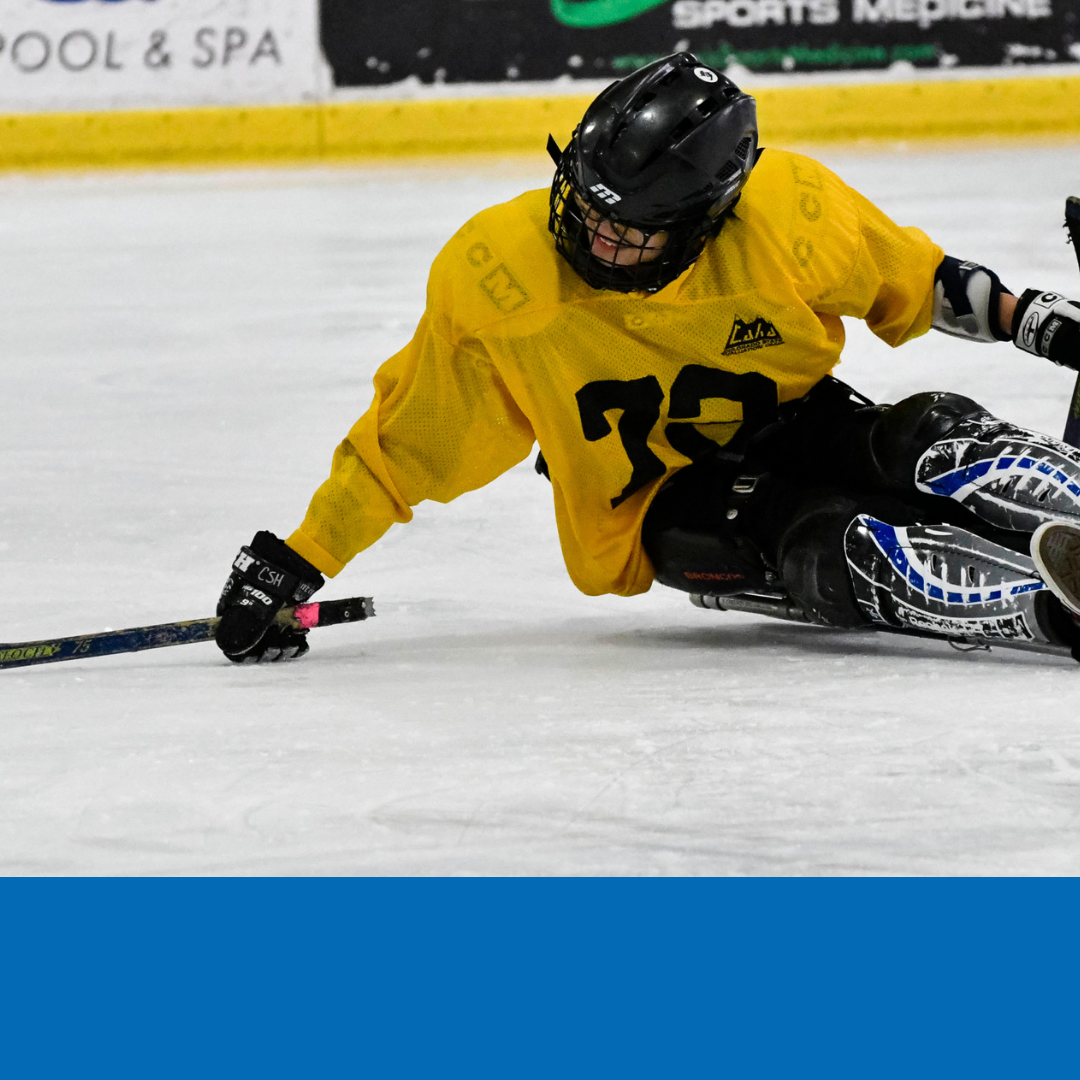Sled Hockey
About
Sled hockey had its beginning in the early 1960s when some enterprising athletes at a physical rehabilitation center in Sweden wanted to play the game. The men modified a metal frame sled with two regular-sized ice hockey skate blades that allowed the puck to pass underneath. Their hockey sticks were round poles with bike handles.
The growth of the sport was slow to develop but by 1969, Stockholm had a five-team league that included both disabled and able-bodied players. Ice sled hockey was first demonstrated at the Paralympic Winter Games in Sweden in 1976, and then again at the 1988 Innsbruck Paralympics. It became an official event at the 1994 Lillehammer Paralympics.
“There have been such huge advances in player skill and advances in equipment that the game of sled hockey from the 1990s and the game today is totally unrecognizable,” said Tom Carr, CTRS/L, assistant director of outreach and athletics, at Northeast Passage.
What is Sled Hockey?
Sled hockey (sledge hockey in Canada and Europe) is a sit-down version of ice hockey for players whose disability prevents them from playing stand-up hockey.
Competition
There is little difference in sled hockey and stand-up hockey. The goal is still to put the puck in the net. Sled hockey players use their arms to power themselves around the ice and their hips to move side-to-side. There are six players for each team – three forwards, two defensemen, and a goalie. Substitutes may be made when play is stopped, or on the fly. Previously, periods were 15 minutes in length, but now are increased to 20 minutes, the same as stand-up hockey. Play is on a regulation sized ice rink with standard size nets and puck. Checking and high-speed slapshots are common features of the sport. Players and spectators alike experience the same thrills as stand-up hockey. Two able-bodied referees call the game.
Who Can Play?
Sled hockey is played by a wide range of players with a variety of mobility limitations: amputees, spinal cord injuries, spina bifida, along with anyone who has a permanent disability that limits participation in stand up hockey. In addition, with the exception of the highest level of competition, non-disabled players are encouraged to participate.
“To play sled hockey, the only requirement is that you have a disability that prohibits you from playing stand up. That makes it very broad,” said Carr.
Northeast Passage, a Move United member organization in New Hampshire, has a thriving sled hockey program that attracts as many as 200 participants throughout the winter season. “As a team sport, it’s one of the fastest growing,” Carr said.
Part of its appeal is that there is little difference between sled hockey and stand up hockey in how the game is played. “It’s fast-paced and a full contact sport. The main difference is it’s played on a sled,” he said.
Sled hockey is a great form of exercise and fitness. It increases strength and coordination and also conditions the upper body. The balance used to propel, play the puck, and turn and stop gives arms, back and abdominal muscles a workout. Those who play regularly quickly notice an increase in overall strength and balance both on and off the ice.
Equipment
Check out sled hockey equipment here.
Learn More
Adaptive Hockey Coaching Manual- USA Hockey
National Governing Body- USA Hockey
International Governing Body- International Paralympic Committee
Paralympic Ice Hockey- Team USA
Programs Near You
Ready to try sled hockey? Click here to find a program near you!




